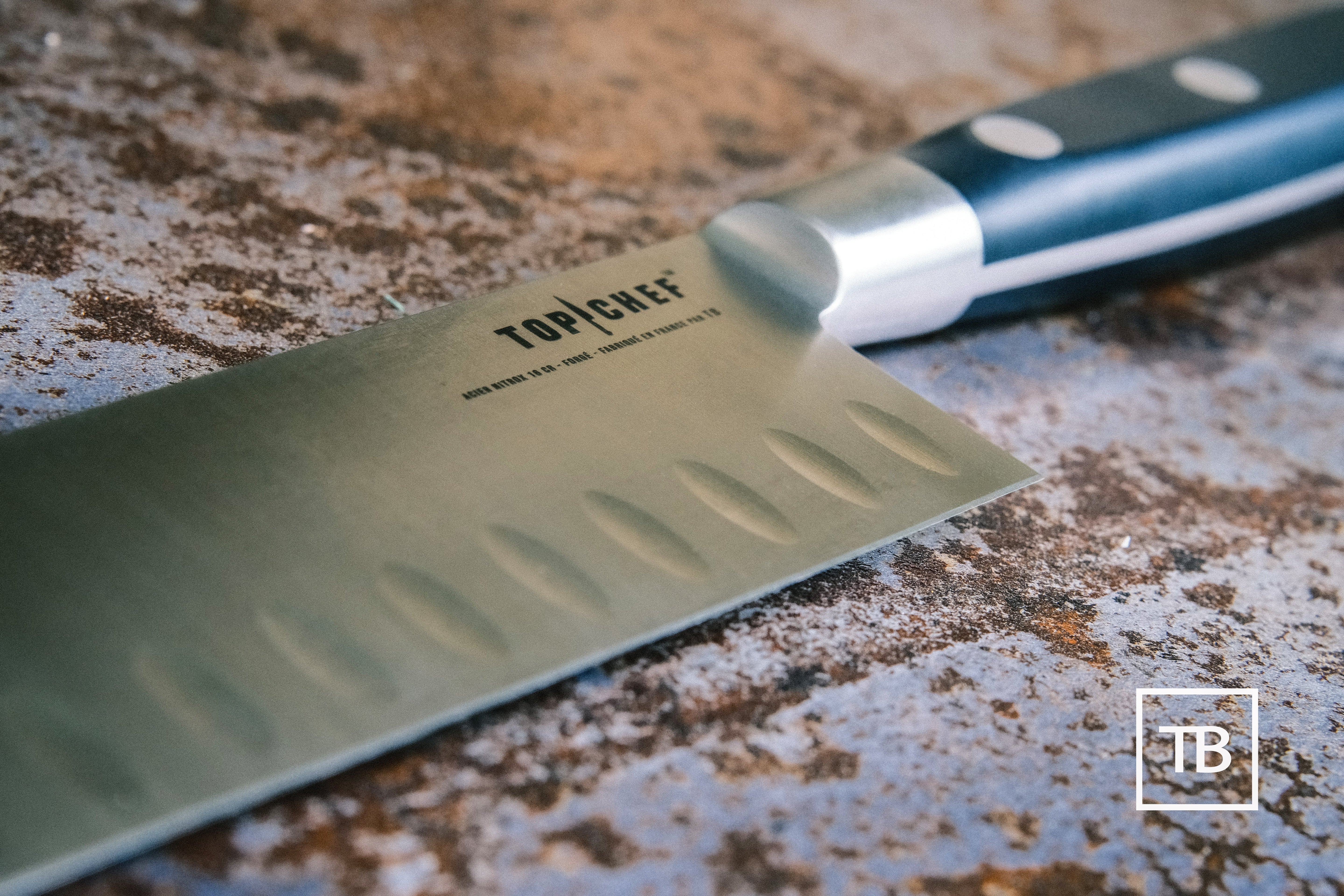Cutting food is an essential skill in the kitchen. Whether you're preparing a delicate dish or cooking it perfectly, using the right tools and applying the right techniques is crucial. Here are our tips for cutting meat, fish, vegetables and fruit with precision, while highlighting the exceptional knives from TB 1648, made in France.
Cut meat with precision
Choosing the right knife
When cutting meat, it is essential to use a knife that is suitable for each type of meat. A meat knife is designed to cut through the meat fibers effortlessly. A good example is the TB 1648 Furtif 19 cm Meat Knife. Its black blade and ergonomic design allow you to cut clean and thin slices, ideal for roast meats or steaks.
Cutting tip
For even slices, always start by cutting perpendicular to the grain of the meat. This makes it more tender and gives a more elegant presentation.
Cut the fish carefully
The ham knife, an ideal ally
Although the ham knife is mainly used for ham, it is also perfect for cutting fish into thin slices. The Maestro 30 cm Ham Knife , with its long and thin blade, will allow you to make precise cuts, even in fish with delicate flesh.
Cutting tip
When cutting fish, be sure to use a "glide" technique. Slide the knife blade over the flesh without pressing too hard, to preserve the texture of the fish. This will give you clean slices without tearing the flesh.
Cut the vegetables finely
The Santoku knife: versatility and precision
Santoku knives, like the Louis Collection Santoku Knife , are perfect for cutting vegetables. Their wide, sharp blade makes it easy to cut vegetables into even slices, while preserving their shape and texture.
Cutting tip
For vegetables, it's important to hold them securely in place. Use a "push-pull" cutting technique, where you push the knife through the vegetable while using a gentle back-and-forth motion. This technique allows for easy cutting without crushing the vegetables.
Cut the fruit lightly
The paring knife, an essential
For fruit, a small paring knife is ideal. The Brigade Forge Premium 9cm Paring Knife is perfect for peeling, quartering or cutting fruit like apples, oranges or kiwis with precision.
Cutting tip
When cutting fruit, use a paring knife to make clean cuts without crushing the flesh. For softer fruits, like tomatoes or peaches, use a knife with a thin, slightly serrated blade, like the Maestro Bacon Slicer Knife .
The perfect tool for every task
The Georges Collection Butcher's Knife
The Georges Collection Butcher Knife with its wooden handle is designed for cutting raw meat. Its sturdy blade will allow you to easily slice through the thickest pieces and make clean cuts, even for bones.
The Georges Collection Boning Knife
If you need to debone a piece of meat, the Georges Collection Boning Knife , with its POM handle, is the ideal tool. Its thin and flexible blade allows you to remove the bone without damaging the meat, for optimal cutting.
The Louis Collection Chef's Knife
The Louis Collection Chef's Knife is a must-have in any kitchen. Its high-quality blade allows for perfect cutting, whether cutting vegetables, slicing meat or carving fruit. Its balance and grip allow for precision cuts, while reducing fatigue during long cutting sessions.
Conclusion
For perfect cuts, it is essential to choose the right knife for each type of food. At TB 1648, each knife is designed to offer the precision and performance necessary for each kitchen task. Whether you are an experienced chef or a cooking enthusiast, our knives are made to accompany you in your culinary preparations with excellence. Discover our entire collection of quality knives, made in France, to cut each type of food with finesse.



















